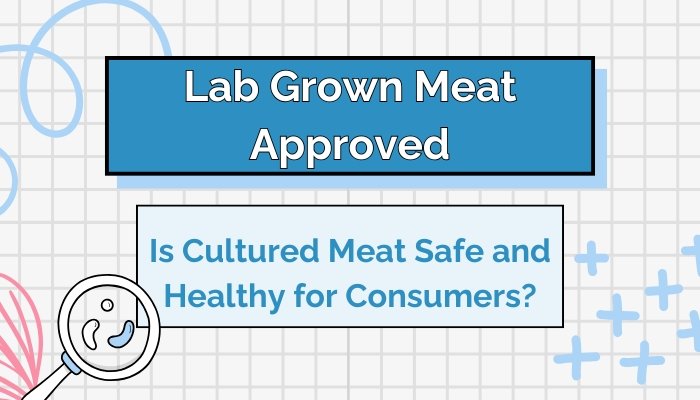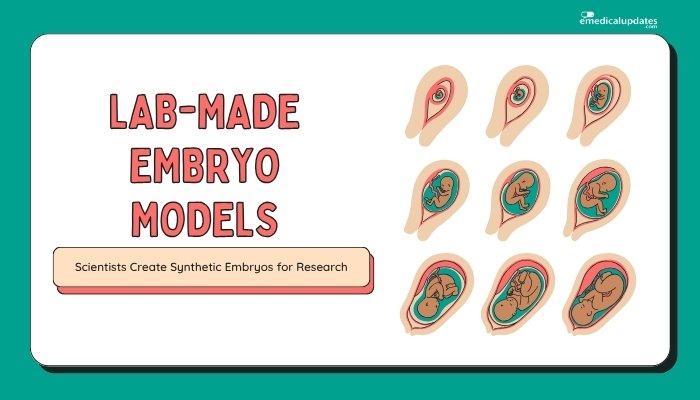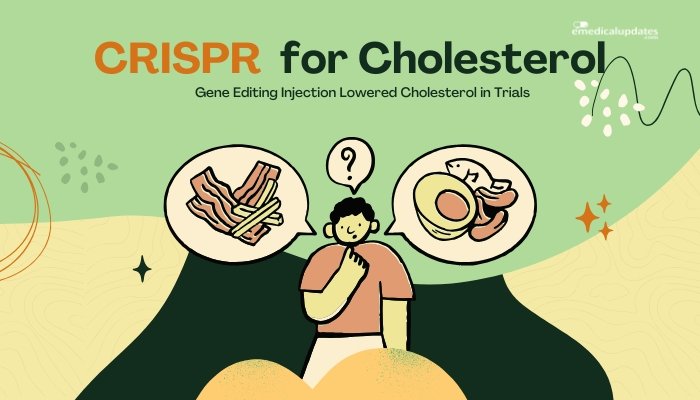Introduction
For many years, the idea of lab-grown meat—also known as cultured or cell-based meat—sounded like sci-fi. Yet advances in cell biology and food tech have propelled this concept into reality. Regulatory bodies in certain countries have approved cultured meat for human consumption, marking a milestone in the global food industry.

Advocates tout its potential for reducing environmental strain and ethical concerns linked to conventional livestock, while critics raise questions about safety, nutrition, and acceptance. This article demystifies lab-grown meat, exploring how it’s made, whether it’s safe to eat, and what it could mean for the future of protein production.
What Is Lab-Grown (Cultured) Meat?
Lab-grown meat is produced from real animal cells—no slaughtered animals involved. Companies obtain a small sample of muscle cells (often from a biopsy) and grow them in a controlled environment (a bioreactor) using nutrient-rich media. Over time, these cells multiply to form muscle-like tissues that resemble conventional meat in texture and composition.
Key Points
- Source: Real animal cells (e.g., from cows, chickens, or fish).
- Growth Medium: Typically includes sugars, amino acids, vitamins, and growth factors.
- Goal: Create a product that tastes, feels, and looks like traditional meat.
Recent Regulatory Approvals
Historically, Singapore became the first country to approve a cultured chicken product for commercial sale. More recently, the United States granted its first approvals for cultivated chicken from select companies, allowing them to bring cultured meat to U.S. restaurants. These decisions followed thorough reviews of safety data and production methods, indicating a growing acceptance among regulators that the process can meet food safety standards.
How Is Cultured Meat Produced?
While specifics differ by company, the general steps include:
- Cell Harvesting: A small sample of muscle and/or stem cells is obtained from a live animal.
- Cell Proliferation: Cells are placed in a bioreactor with a growth medium containing nutrients and growth factors that stimulate replication.
- Differentiation: Cells are encouraged to differentiate into muscle (and sometimes fat) cells, forming structures akin to real meat tissue.
- Harvest and Processing: Once enough tissue grows, it’s harvested. The raw cultured product can be formed into final shapes—like fillets or ground meat.
Modern processes often rely on scaffolding (e.g., plant-based or collagen-based frameworks) to help cells assume the correct texture. The entire operation is done in carefully controlled, sterile conditions to avoid contamination.
Potential Health and Safety Concerns
Despite regulatory approvals, some wonder if lab-grown meat is truly safe or healthy.
- Sterility: Because production occurs in a closed, sterile system, the risk of contamination (e.g., pathogens like E. coli) is typically lower than in slaughterhouses.
- Antibiotic Use: Proponents argue that cultured meat may use fewer or no antibiotics, reducing antibiotic resistance concerns.
- Growth Factors: Companies must verify that added hormones or growth factors are either removed or neutralized before consumption. Regulators require proof that final products pose no harm.
- Novel Proteins: Some question whether newly expressed proteins might cause allergic reactions. However, regulators typically check for allergenicity in safety reviews.
Overall, governments approving these products rely on extensive data indicating the final meat composition is chemically and nutritionally comparable to conventional meat—and free from harmful residues.
Nutritional Profile
While more large-scale studies are needed, preliminary data suggest that cultured meat:
- Macros: Has protein, fat, and other macro nutrients similar to the animal source from which the cells derive.
- Customization Potential: Some companies might adjust fat content or incorporate beneficial fatty acids, tailoring nutritional aspects.
- No Antibiotic Residues: Typically absent, which could be beneficial for public health.
Further, the final composition can vary depending on the growth medium, scaffolding, and specific cell lines. Each brand or product might differ slightly in taste and nutritional breakdown.
Environmental Impact
One major motivation behind lab-grown meat is sustainability. Traditional livestock farming consumes significant land, water, and generates greenhouse gases:
- Lower Land Use: Cultured meat might require less farmland, particularly if scaled properly.
- Reduced Greenhouse Gases: Early estimates show it may cut methane and carbon dioxide emissions, though the energy needed for bioreactors is substantial.
- Resource Efficiency: Fewer feed crops needed, less deforestation or habitat loss.
Life-cycle assessments remain ongoing, comparing energy usage in cell-culture labs vs. industrial farming. The net environmental benefit depends on clean energy availability and scale-up efficiency.
The Future of Cultured Meat
Scaling Up and Costs
Currently, production remains limited and costly. As processes optimize, costs will likely drop. Some predict that within a decade, cultured meat could achieve price parity or slight premium compared to conventional premium meats.
Market Acceptance
Consumer acceptance is a wildcard. People weigh novel technology, perceived unnaturalness, or alignment with personal ethics (like supporting cruelty-free or more sustainable protein sources). Education and transparency around production methods may drive acceptance.
Expanding Variety
Beyond beef or chicken, companies are exploring cultured seafood, pork, and more complex cuts of meat with a realistic marbling or muscle-fiber structure. A range of offerings might eventually populate supermarket shelves.
Frequently Asked Questions
- Is cultured meat considered vegan or vegetarian?
- Typically not, since it originates from animal cells, although no slaughter occurs. Some vegetarians might accept it, others consider it an animal product.
- Does it taste exactly like real meat?
- Taste tests often reveal similarities to conventional meat, though slight differences in texture or flavor can occur. Companies are refining these aspects.
- Is cultured meat regulated the same as normal meat?
- Food safety authorities treat it as a novel food requiring thorough safety evaluations. Labeling laws and oversight processes evolve as approvals expand.
- When can I buy it in supermarkets?
- Timelines vary. It’s available in limited restaurants or pilot markets in some regions. Widespread retail distribution may be years away, pending scale-up and cost reductions.
- Is it genetically modified?
- Typically, the cells aren’t genetically altered. They are grown, not genetically engineered per se—except in certain lines that might incorporate genetic edits for improved yield or nutrient composition.
Conclusion
Lab-grown or cultured meat stands at the crossroads of innovation and necessity, aiming to feed a growing global population sustainably while alleviating animal welfare concerns. With early regulatory approvals and promising trial data, these products appear to be moving from lab curiosity to real-world commercial viability. Although questions remain about cost, scalability, and consumer acceptance, the safety and potential environmental benefits position cultured meat as a genuine contender to transform the meat industry. For consumers intrigued by high-tech, cruelty-free proteins, the next few years may see cultured meat evolving from an exotic concept to an everyday option on grocery shelves, redefining what’s possible on our plates.
References
-
Post MJ, et al. (2021). “Progress in cultured meat production.” Nature Food.
-
FDA (2023). “Guidelines on lab-grown meat safety evaluation.”
-
Food and Agriculture Organization (FAO). (2022). “Sustainability and future outlook for cultured meat.”
-
Stephens N, et al. (2018). “Cell-cultured meat: Analyzing consumer acceptance.” J Food Sci.






